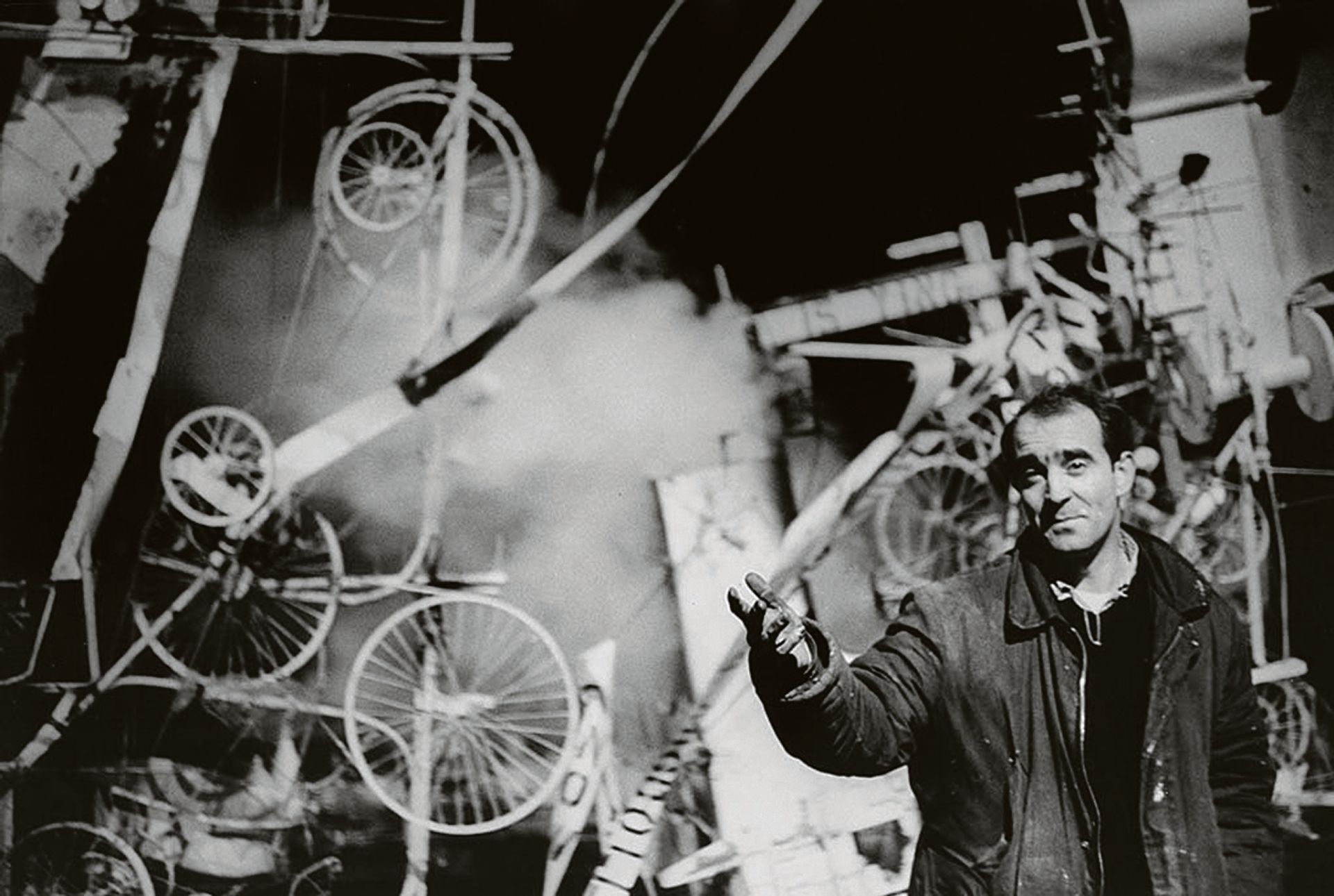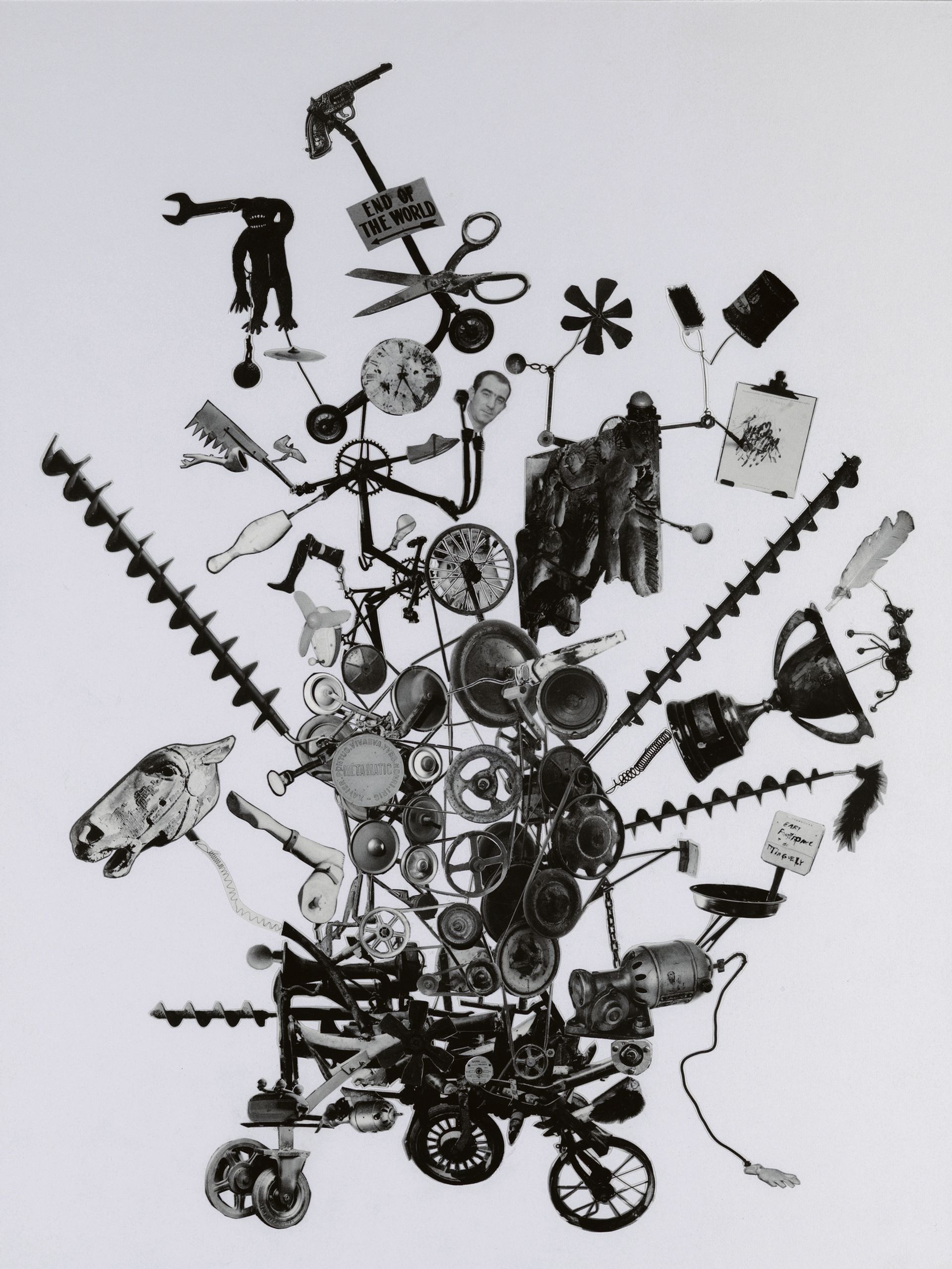Michael Landy has been making art from, and about, the kind of stuff that most people take for granted ever since he graduated from Goldsmiths in London in 1988, where he showed crocodile-clipped tarpaulin sheets in the now legendary Freeze exhibition, organised by fellow student Damien Hirst.
Disposal and human detritus lie at the heart of Landy’s two best-known projects: the epic Scrapheap Services (1996), in which he created an entire services industry to rid society of untidy realities, complete with a giant shredder and rubbish bins. For Breakdown (2000), he led a workforce that first meticulously catalogued, and then painstakingly pulverised, all his material possessions.
Also running through Landy’s work, whether explicitly or implicitly, has been an obsession with the kinetic sculptures of Jean Tinguely. Landy has made numerous drawings directly after the Swiss artist, and in 2010, he organised an exhibition of his and Tinguely’s works at Tate Liverpool. He also made a documentary film based on his (unsuccessful) attempt to recreate Tinguely’s self-destructive 1960 sculpture Homage to New York. We spoke to Landy, who is represented by Thomas Dane Gallery at the fair, as he prepared his first major survey show, Out of Order (until 25 September), which is now on view at the Tinguely Museum in Basel.

The Tinguely Museum seems like the perfect place to have your first major museum survey.
It really is. I saw an exhibition of Tinguely’s work at the Tate [Gallery] back in 1982, when I was a lowly textile student in the Midlands. I absolutely loved [the show]. Since that point, I’ve been a huge fan of his work, so it’s a great honour to be able to show in the Tinguely Museum.
Did the institution approach you?
They came to see Joyous Machines, an exhibition of my work and Tinguely’s at Tate Liverpool in 2010. I was an artist in the exhibition and also its co-curator. They saw this little collage of mine, called Machine Created to Destroy the Tinguely Museum, and I think that’s where the conversation began. It’s about how I break into the Tinguely Museum, steal all these sculptures and use them to create a huge sculpture, which then destroys the museum. I find it odd that the museum was built after he died, so he didn’t know anything about it. Obviously, I hope that when I die, they will build a museum in my name as well.
What was it about the 1982 Tinguely show that made it such an epiphany for you?
I’d never seen people laughing and smiling in an exhibition space—it was amazing. You could put your foot on a pedal and a piece of junk would come alive, or it would start dancing. Some of the machines were broken or just didn’t work at all. You could get on a machine and ride it, or it would make you an abstract drawing. It was just anarchic, and I came away really enthused. I also got a Meta-matic drawing, which I then destroyed in Breakdown, many years later.
The title of this exhibition is Out of Order; chronologically, it is literally that.
Yes, there’s no chronological order. I’ve jumbled up my work dating from 1990 to the present. The idea of having a mid-career retrospective fills me with dread, in a way, so I thought, ‘How can I make this interesting for myself?’ I’ve recreated Market, my 1990 piece with empty market stalls and crates; that’s spread throughout the ground floor, as a way of gelling all the disparate works together.
So the elements from Market choreograph all the other works.
I see it as being like the English landscape, with the artificial grass on the market stalls as the rolling hills of England, and you explore it like a walk in the landscape. I’ve tried to open it up into an open-plan kind of space, so you are wandering through this landscape and you see a market stall and you’ll have a bit of a rummage. Then you may see a saint or you might see my dad’s foot, and then I’ve got the credit-card-destroying machine, which is like an eyesore or a blot on the landscape.
I also have Tinguely’s Suicide Carriage, which is a relic from his Homage to New York performance in 1960, and some other fragments from that performance, as well as some fake fragments that I’ve made myself. The whole exhibition is one single piece of work—that’s how I see it. I don’t really help people; they’re thrown in at the deep end straight away. It’s sink or swim, basically. My work isn’t really known in mainland Europe, and I’m slightly intrigued by what people will make of it.

Given that your show is on view during Art Basel, it’s particularly appropriate that you’re including a machine to destroy credit cards.
It was originally in Louis Vuitton; then we had it at Frieze and destroyed around 400 credit cards. Then it went to Greece, but, sadly, they’d already destroyed all their credit cards. The machine will be fully functional, and it also has a Meta-matic drawing machine attached to it, so people will get a drawing as compensation.
Your work often uses consumer culture and systems to make a wider social comment. Would you call yourself a political artist?
No. I’m interested in value, worth and labour; those are my preoccupations. The kind of value we give to human beings thrown on the scrapheap, or weeds, or lowly crates, stuff that’s quite mundane—that’s what interests me.
Many of your projects also require an enormous amount of labour. You spent more than two years cutting out figures from packaging for Scrapheap Services, Breakdown was painstaking and laborious, and you seriously damaged the tendons in your hand while making the Nourishment series of weed etchings.
I am an obsessive person; I like detail, and I like to be involved in a project that is all-consuming. That detail can be on a micro or macro level. I recreated my family house and made a whole inventory of the house, as well as [an inventory of] all my possessions for Breakdown, and I’ve done inventories of people’s faces. I itemise things; that’s what I do.
The ghost hovering over this exhibition is Tinguely’s Homage to New York, his 1960 self-destroying machine, which you have comprehensively documented and researched and wanted to recreate, but were unable to because Niki de St Phalle’s granddaughter would not give you copyright clearance.
Now I’m going to recreate the sculpture in a different way: I’m going to do it using people. The idea is that on the last day of the exhibition [25 September], I’m going to restage Homage to New York, but using people as mechanical parts. It was a one-off thing: Tinguely didn’t practise it beforehand, so there was a series of events that happened to make it unpredictable, and somehow I’ve got to build that into the performance. Somehow, things have got to go awry.
Michael Landy: three key works Scrapheap Services (1996), Acquired by the Tate in 1997
This room-sized installation presents a fictional people-cleansing company. Thousands of human-shaped figures cut out from discarded packaging are scattered over the floor and fill rubbish bins and a street sweeper’s cart. Mannequins dressed in red uniforms sweep them up for disposal in the Vulture machine, an adapted wood shredder. “From 1993 to 1995, I was unemployed, and I invented a fictitious cleaning company to employ myself to make this heap of discarded people. The heap represented the loss of human potential,” Landy says.
Breakdown (2001)
Landy took over the former C&A clothes store on Oxford Street in London, and, over a two-week period, destroyed all his possessions as a public exhibition. Each item was catalogued, placed on a conveyor belt and pulverised to its basic materials by ten uniformed workers. The resulting bags of granulated rubbish weighed nearly six tons and were recycled or sent to landfill. “Over 14 days, I destroyed 7,227 items that I had collected up to the age of 37. It was the best two weeks of my life, and everything I have done since has been a disappointment in some respects,” Landy says.
Breaking News (2015)
This work comprises hundreds of red-and-white drawings on torn paper, depicting an assortment of signs, slogans and symbols. Steeped in personal, cultural and political references, they also often refer to Landy’s previous works. “Red and white is my favourite colour scheme; for each slogan, I use a base of oils and scratch into it to create the image,” he says. “There are a lot of symbols and signs reappearing here that I’ve used in previous drawings. When I was younger, I couldn’t really reference my own works, but I can do that now and have a bit of fun with it, too.”
• Michael Landy, Out of Order, Tinguely Museum, Basel, until 25 September

